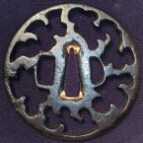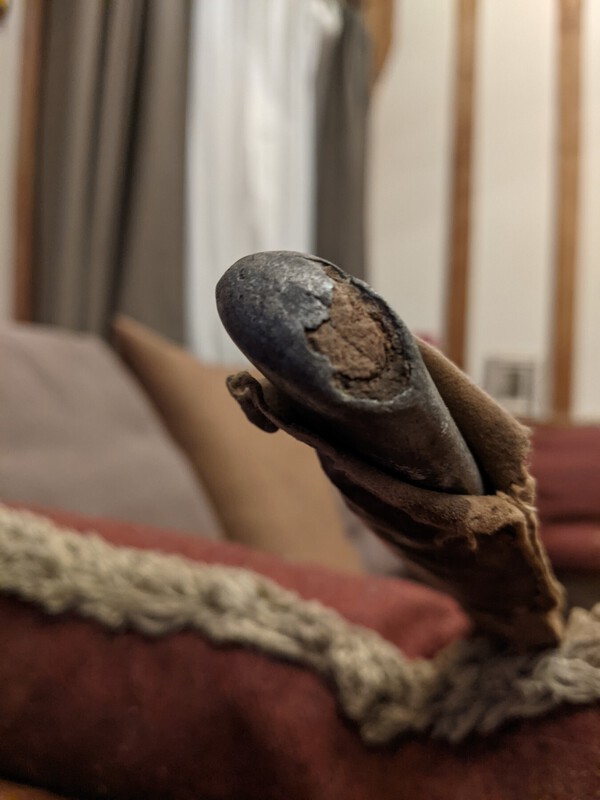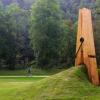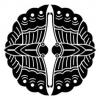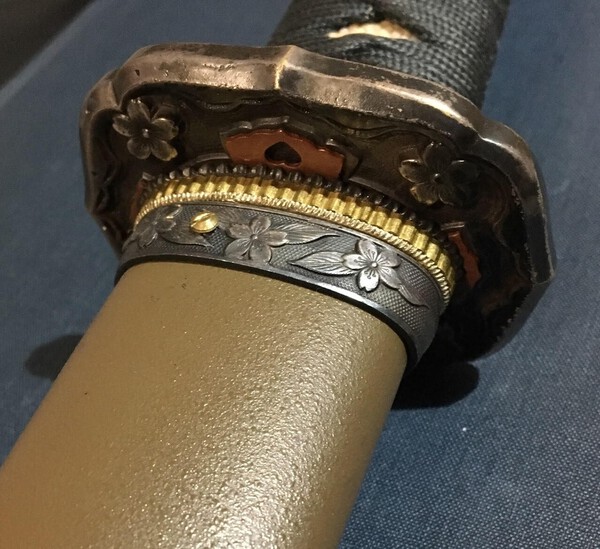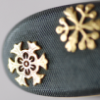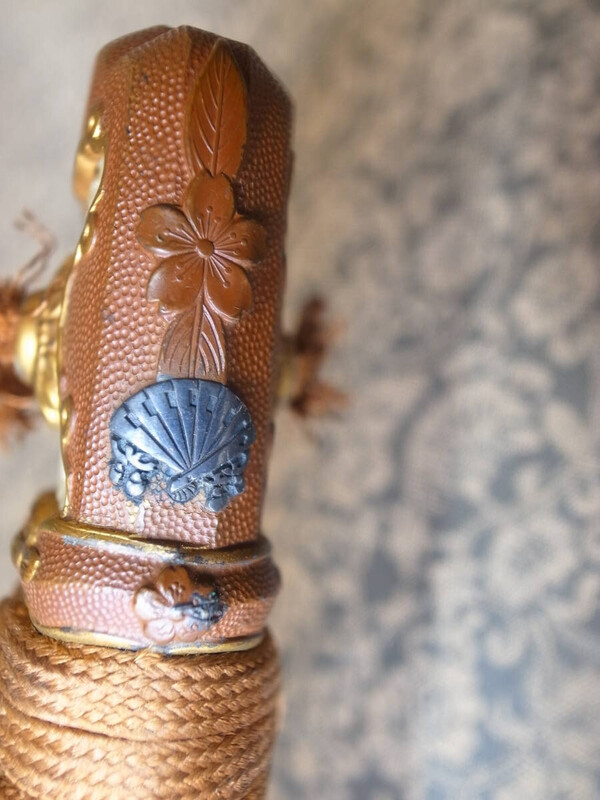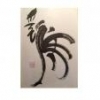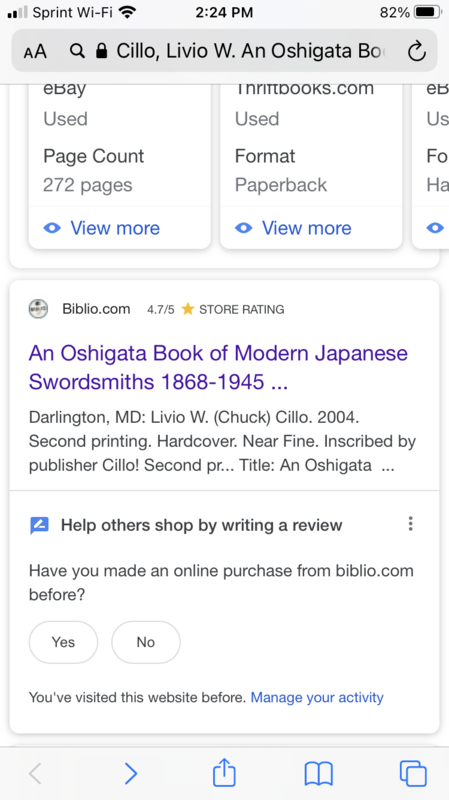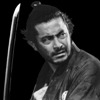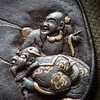Leaderboard
Popular Content
Showing content with the highest reputation on 10/16/2021 in all areas
-
Seki stamp never meant the sword is a non traditional showa-to. The seki (and sho) stamps originated with a sword making guild in Seki as a marketing/quality control technique after lots of cheap swords were breaking in combat. They starting a quality control program that anyone could submit their blades for an inspection and receive the stamp. Once stamped, it was a sign that the blades were good for combat, so it became popular as a way to insure buyers that the sword was good.4 points
-
I don't think there's a particular purpose or function to the teeth... I've typically seen it described as a snowflake motif, while the two large holes look like a variation on the sea cucumber motif. The sea cucumber with one side as a snowflake shows up fairly often. Here are two of mine, the second one has a single cherry blossom added to the mix.3 points
-
We seem to be conflating sword societies and paper. The original question asked about the survival of sword societies and provided a timeframe - in the near future (presumably). However, that is only an assumption, as we do not know whether paper will be phased out in the near term or medium term. Arguably, it is a moot point in the long term. Therefore, we need to go back to basics and focus on whether sword societies will survive. This is a difficult question. Theoretically, they should, as long as the hobby and collecting interests persist. However, an alternative theory is that they become much looser associations of individuals, on a much more federated (as opposed to centralised) and possibly purely, or largely, virtual basis. If people feel sword societies bring benefits (educational, emotional, etc), they should survive as the members will persevere to sustain these organisations. However, if sword societies become irrelevant (through obsolescence of ideas, education, unavailability of study materials etc), then the threat of oblivion is very real. Another stream of analysis, which posters often digress into, is how best to study - with swords in hand, electronically (photos on a website or other repository), by reading books (physical or electronic). Again, this is a different topic entirely and merits its own debate. In my view, study should be multifarious and variegated - physical, electronic, by virtue of passive information absorption (reading/listening) and active participation (kantei, debates). Once, we abstract the method of information provision and internalisation as described above, as long as sword societies provide the avenues for learning or enjoyment, I hope they will survive. As Paul has outlined regarding the U.K. and as far as I know the US NBTHK are also doing, combinations of physical meetings, electronic videoconferences, printed materials, electronic materials, debates etc energise and excite the membership and retain it. in my view, membership retention is one serious challenge. People often sign up but fall away as: personal conflicts arise, member aspirations are not met (these societies are not museums with vast collections and are not universities with dedicated teaching materials and courses; funds are not unlimited; volunteers donate their own free time for others’ benefit; societies cannot provide definitive answers members sometimes seek and definitely cannot shortcut hard work and learning) and sometimes members just join for the wrong reasons. Another challenges are the age and sex factors: middle-aged and ageing males predominate. So, we need to diversify our membership bases by being more inclusive, more pluralistic and democratic in our outreach to prospective members, more tolerant and broad in subjects we cover (tosogu, kodogu, blades, restoration etc). There is much more to say but this is such a vast topic that has often preoccupied my mind. We try to recruit and supplant membership decreases but my observations across several societies are that we are barely maintaining membership. We are not expanding or growing and we just about manage to stay at the same size. Other societies just fold and disappear.3 points
-
NBTHK's tatara makes three grades of tamahagane (Grades 1, 2, and 3). The site says Japanese swords are made from Grades 1 and 2. This also repeats the information about the carbon content of the steel, namely Grade 1 is between 1.0% - 1.5% carbon, while Grade 2 is between 0.5 - 1.2% carbon. It doesn't say what happens to Grade 3 tamahagane... maybe Grade 3 ends up in the souvenir shop of the sword museum. https://www.touken-world.jp/tips/19308/ 靖国たたらと日刀保たたらは、それぞれ異なる基準のもと分類されており、靖国たたらでは、「鶴」、「松」、「竹」、「梅」の4段階で品質を分けていました。日刀保たたらでは、「1級品」、「2級品」、「3級品」の3段階で品質が分けられており、作刀の際に用いられるのは1級品や2級品など、最高品質の玉鋼です。 As far as I know, there is no official translation of these grades, so when people like me translate into English, we'll use whatever English translation makes sense. So I have used "Grade 1" for 一級品, but another translator might decide to call this "1A". Note that the predecessor of the Nittōho Tatara was the Yasukuni Tatara, and Yasukuni had 4 grades of tamahagane: Crane, Pine, Bamboo, and Plum. Crane would be the highest grade of tamahagane, while Plum would be the lowest.3 points
-
2 points
-
I am hardly a expert and like Dale posted a different species of sea cucumber seems correct but I have seen this described as a wave motif which I found to fit in with the sea theme2 points
-
2 points
-
It’s called “Maru ni mitsubiki”. Unfortunately used by many families, for example: Abe, Asano, Kawasaki, Sabae, Kitsukawa, Sakuma, Takaki, Tsugu, Kitanokoji, Manabe….etc…etc. In a modified form by: Ashina, Furuta, ….etc.2 points
-
2 points
-
Namako - trepang, While the snowflake is a common enough outline either positive or in negative, I think in this instance it could represent a different species of Namko [sea cucumber] there are hundreds if not thousands of species. There was also a fad in Edwardian times for using tsuba as key hole escutcheons - a deplorable practice. [I had an old article mentioning this practice - but darned if I can find it at the moment] You might notice the holes in this example are recessed for flush screws.2 points
-
I was going to say Namako (sea cucumber) but you beat me to it. Miyamoto Musashi is said to have made Tsuba on this theme. As to the two central holes, Roger’s offering is thought-provoking.2 points
-
I am hesitant about putting my nose in here but could the holes be for rivets that might have held a seppa or some such overlayed attachment. The tsuba below has two rivets each side of the hitsu ana holding an inlayed copper sisc to an iron plate. OR, I have read here (I think) that sometimes a tsuba has been used as a keyhole plate. Roger j2 points
-
Grey Doffin sells a set of kanji cards. One side shows the kanji and the back shows the translation. It is an easy way to pick up kanji used in signing a sword. You can take a part of the deck with you and study that part when you have time. After a while your mind remembers them. Sword terminology can take longer to learn.2 points
-
2 points
-
This is from "The Art of the Japanese Sword" Grade 1 C 1.31; Si 0.02; Mn 0.01; P 0.017; S 0.003; Ti 0.002; Ni 0.001; Cu 0.01 Grade 2 C 0,77; Si 0.01; Mn 0.01; P 0.022; S 0.004; Ti 0.004; Ni 0 ; Cu <0.01 Grade 3 C 0.31; Si 0.02; Mn 0.004; P 0.021; S 0.007; Ti 0.003; Ni 0.001; Cu 0.01 And this is from Usagiya website. In the furnace, a big iron ingot is produced. It includes various qualities in parts. Then, it is broken into many small pieces. Then, the small pieces are classified into various grades by the terms of hardness and sizes. For example, hard and proper size is highest price, grade 1A (8,250.yen /kg). After it 1B. Some is the too hard (cast iron, 3,300.yen/kg). The steel pieces are classified more grades. And the last pieces are these lowest priced tamahagane. Some people say that this grade of tamahagane is close to the material in Koto period. So some smiths intentionally use this tamahagane. After tamahagane is not homogeneous i think this are all more tendencys then facts for all the sorted pieces. When i have read interviews with different mukansa smiths and they got asked about what the best tamahagane is they all gave different answers. I think every smith has his own experiences and methods and prefer different things.2 points
-
雲州善金作 Unshū Yoshikane saku on the reverse side 守刀 陶山忠司 mamori-gatana Suyama Tadashi Made for (or as a gift for) Suyama Tadashi2 points
-
1 point
-
1 point
-
I was wondering if anyone has seen any examples of saya fittings properly boxed. Photos show a set of Satsuma style saya fitting in iron with gold centipede mon and the Satsuma "cross in circle border" mon. I would love to place this set into a nice kiri wood box, but to do so would require some custom work I'm sure. I have never seen a set of saya fittings boxed before, but this must had been seen somewhere before. I'm just searching for some direction on this idea that look appropriate done, not too Americanized shall I say. Ron STL1 point
-
Item No. 133 Three ' orphan ' fuchi one in shakudo , the other two in shibuichi. 133a - Garden lantern and pine tree in relief , signed Hamano Yasuyuki 133b - Clouds with demons , signed Nomora Masamitsu with kao 133c - Stream and reeds , signed Sekienshi Tsuchiya Yasuchika Provenence - Lundgren Collection nos. 222 , 243 and 257 respectively Purchased some two and a half years ago at auction.1 point
-
Lol didn't like my joke huh....no respect i get no respect. 😂1 point
-
I think he knew the jig was up. I woke up this morning to find he had cancelled and refunded the money. He put in the Note that "Buyer asked to Cancel". That is not right. In our correspondence via -ebay-, I did not. I will try and buy the item in Japan. After that auction ends, I will return to defenestration of him. Eye for an Eye, Tooth for a Tooth- I will pursue him for a while and invite others to report him with me. I will make it easy by providing any necessary links. His listings are all pretty much lifted photos from Japan, and it is easy to image search track many of them down.1 point
-
I would cancel, and if you really like the item try to buy it for a lower price at the other auction. I have tried a few times to report obvious frauds to eBay and never received any feedback.1 point
-
1 point
-
1 point
-
https://artscape.jp/artscape/eng/focus/2109_02.html BEST1 point
-
Hi Sunny, I am presuming this is just part of a longer inscription? (maybe show us the overall pic)? Anyway, it is definitely strange...not sure at all about this but here goes.... Top two characters are katakana characters (i.e. sound only...not meaning) so they read MO and RO = Moro Third character seems to be a kanji, KYO or TOMO which has the meaning together (with). So not sure, but this seems to say MOROTOMO? Hope this helps....1 point
-
1 point
-
1 point
-
Relic of the past. Digital libraries are far more efficient and instantly searchable, not to mention much cheaper. Ipad with an instant library of a thousand volume searchable, the cognitive gains are simply immense. The current practice of reading entire volumes containing lists of smiths and work is an incredibly inefficient search methods, and impedes learning. Motivated beginners nowadays can learn at a rate unimaginable in the past and reduce the knowledge asymmetry immensely (and as a side-effect, horse trading income). Paper is tied to demographics. Collectors are a venerable population, in the US I would think it is mostly boomers who could enjoy the bounty hunting period of history. So paper will slowly die out with the cohort. The question is whether or not new blood will enter the overseas market of if it will concentrate back into Japan, which faces a similar albeit extremely skewed population of very wealthy whales competing for the top. Same story with NBTHK papers really. Should be at this stage digital certificates, but the tastes are driven by the demographics. Everything with swords moves slowly due to the preferences of the cohort. In fifty years we might see blockchain-issued NBTHK papers. The new reality will take time to manifest, and Nihonto will probably be one of the last collectibles to shift into the new digital epoch. Which is unfortunate because it reduces the immediate value and appeal of the hobby with newcomers.1 point
-
WOW Great question. Although I can’t help I am very interested as it is something that I never thought much about. I hope others with the knowledge that you seek chime in. I like you will be interested in their answers. Thank you so much for posting the question. MikeR1 point
-
1 point
-
Is the scabbard painted black or is it some other color? Is the scabbard serial number matching to the blade serial number?1 point
-
That is offtopic and not part of this discussion. Before aynthing is sent for polishing it first needs to be determined if it is worth teh effort. Gimei or Mumei Muromachi hardly is1 point
-
Michael, Kyushu is a wonderful place. There’s so much European-Japanese history here. I also forgot to add that de Liefde, the ship which William Adams was aboard, washed ashore at Kuroshima, which is an island just off Usuki in Oita. I’ll try to get a couple of cheeky photos for you. Jussi, I’ve attached the lists for the two displays. I agree, koto Bungo-to can be very elegant indeed. A few months back, I was fortunate enough to be permitted to view several early Bungo tachi in a local shrine which were owned by the Otomo clan.1 point
-
1 point
-
Don't know if I have put this up before, but it's nice enough to see again, An ICHIMONJI MINAMOTO AMAHIDE KORE KITAERU , no date no stamps, that some officer thought enough about to spend a few extra YEN putting in nice mounts. A tan painted saya, with blue Ito handle wrap, and blackened fittings. It is possible the sarute is gold plated.1 point
-
I apologize for not thanking all the responders earlier! My bad; got distracted and forgot (old age) about this post (and the lead up and follow up to SF tokenkai). As atonement, another daisho, put together at that show. Noticed one on a table and realized I had looked at something like it very recently on JAUCE, so picked it up and lucked out on the other. Interesting that the sort of necesary small differences involve one with chisel marks arcing clockwise, the other one has them going counterclockwise. john1 point
-
1 point
-
Yesterday, I met my old friend and his wife. His wife is a calligrapher, so I asked her if she could read the characters on the habaki, especially the 5th character which I was still unsure. Though she was not 100 % sure, her guess was 励 (rei/hagemashi). In that case the reading might be 義理公之励賜 – Yoshisato/Yoshitada ko no hagemashi o tamawaru.1 point
-
Yes, Morita San made a complete set of corrections of many of the translations. I think that it is available on one of the NMB links.1 point
-
1 point
-
1 point
-
a price difference between editions could be due to the amount of books ordered from the print company. bigger discounts with a larger order. the first copy was probably only1000 copies due to limited capitol to invest at the time.1 point
-
There is a correction thread for this book started by Morita san some years back. I too have found a minor translation error on one of the Kanemasa (Murata) swords. Mr.Slough's Oshigata book. FYI, I have enjoyed reading your recent articles by the way.1 point
-
I have found this John Slough book both interesting and very useful and am aware of how much background checking and cross-checking is required. But I did find a very minor error that I had to check to save confusion. Results of 1941 6th shinsakuto exhibition for Shinoda Ujifusa and Niwa Kanehisa (pages 218, 219, 227, 233) they are listed as from "Aichi" when it should be "Gifu".1 point
-
1 point
-
1 point
-
I don't know the history of those 2 prints and I could be completely wrong but my impression was that the second print was issued because it was not possible to source the book because of the limited number of books available on the market (owners would not sell their copy).1 point
-
Hi Xander, An Oshigata Book of Modern Japanese Swordsmiths: 1868 – 1945. The red cover copy lists Livio Cilio as the author and the blue has John Slough as the author; John Slough is listed as copyright holder on both books and the contents are identical. No idea why there are 2 versions of the same book. I'm not aware of a 3rd version; what do you know about it? Grey1 point





